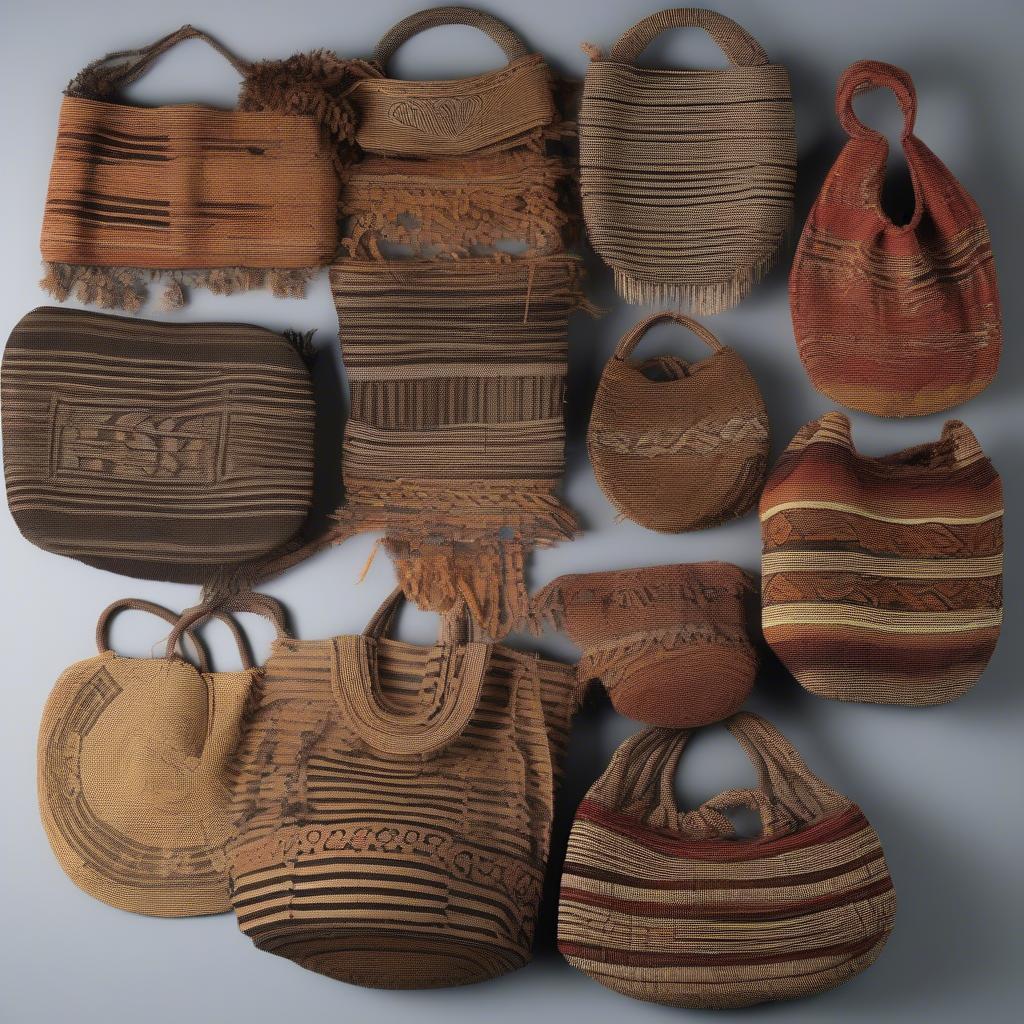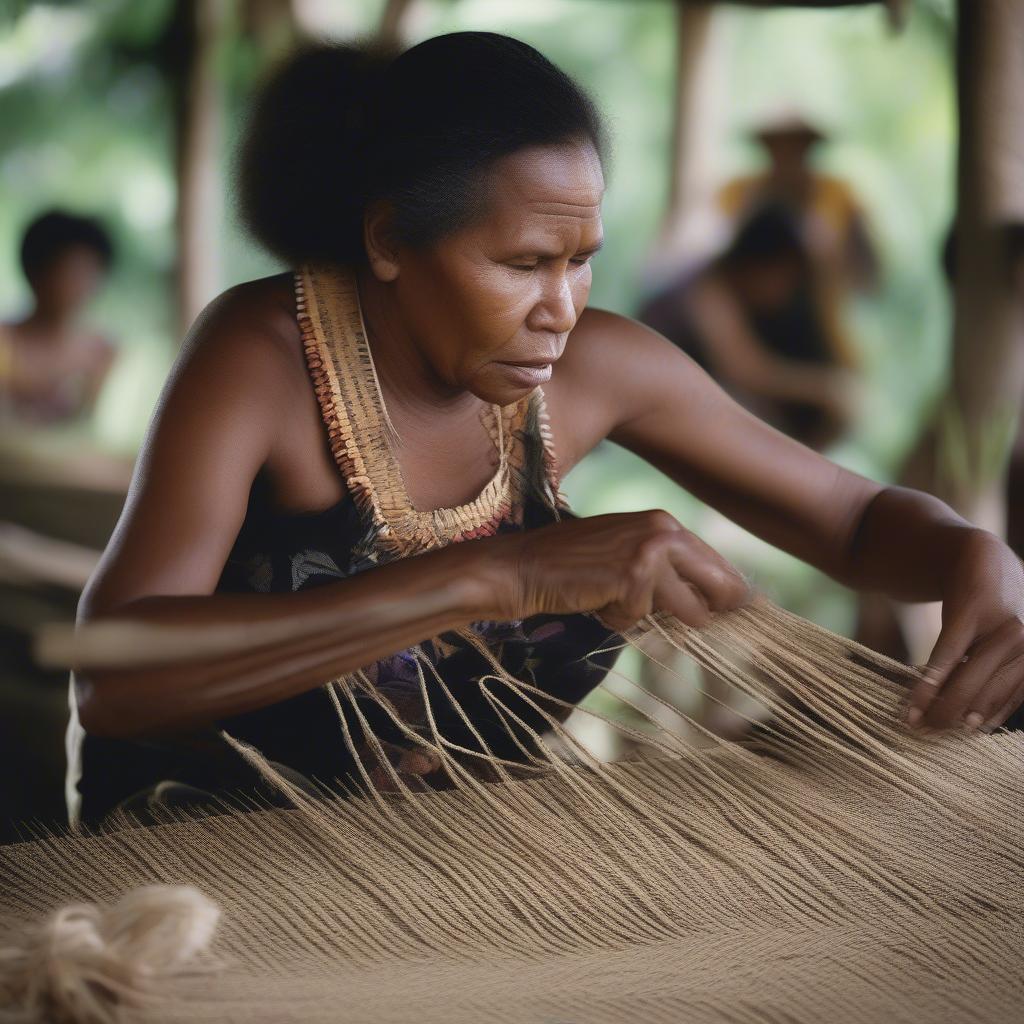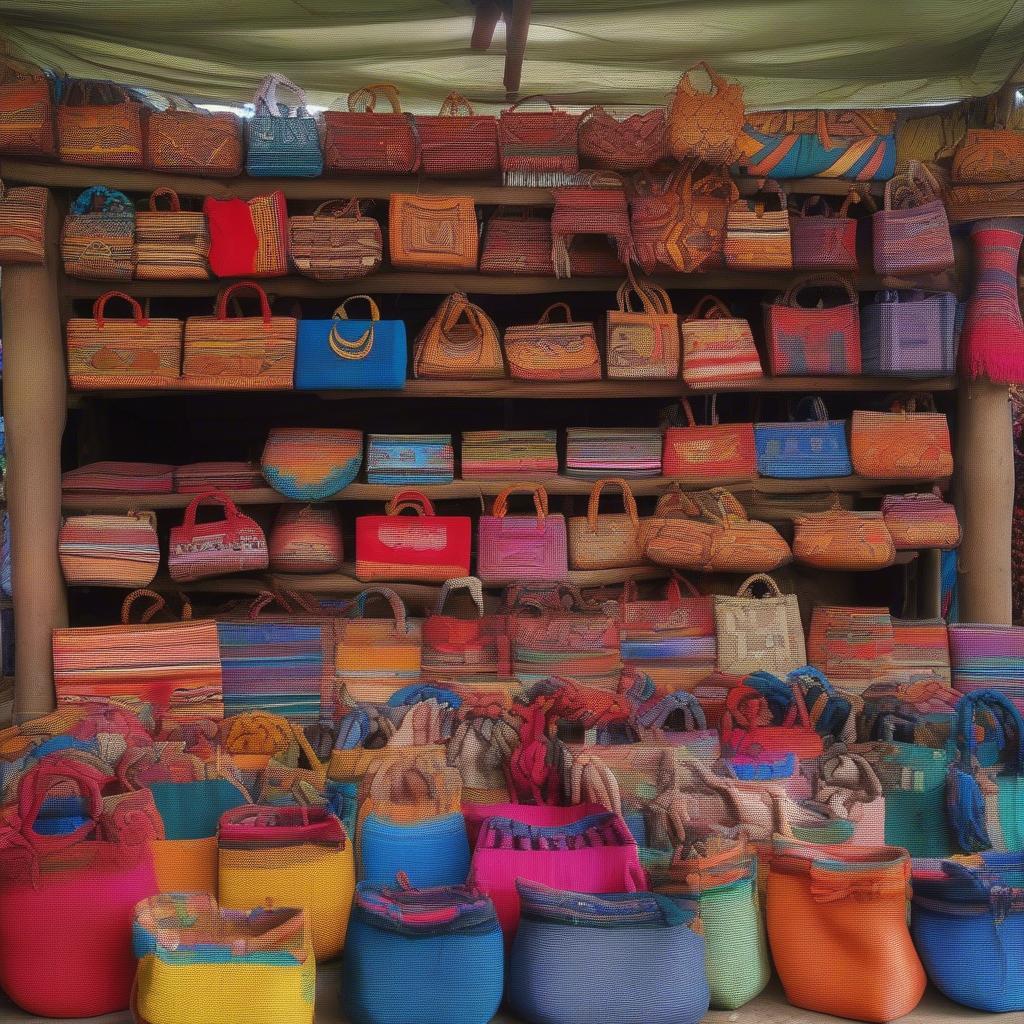Woven Bag
Woven Bags Papua New Guinea: A Journey into Artistry and Tradition
Woven bags from Papua New Guinea are more than just accessories; they’re intricate works of art, steeped in tradition and cultural significance. These unique bags offer a glimpse into the rich heritage of the diverse tribes inhabiting this fascinating island nation. From the highlands to the coast, woven bags showcase a remarkable range of techniques, materials, and symbolic designs, each telling a story of its origin and creator.
Exploring the Diversity of Woven Bags in Papua New Guinea
Papua New Guinea boasts an incredible variety of woven bags, each reflecting the unique artistic traditions of its respective region. Bilums, perhaps the most iconic style, are netted or looped bags traditionally made from natural fibres. These bags, prevalent throughout the highlands, are not just functional carriers but also status symbols, reflecting the skill and artistry of the weaver. Coastal communities utilize different materials like pandanus leaves and create distinct designs often incorporating shells and other adornments. The diversity in materials, weaving techniques, and decorative elements makes each woven bag a unique piece of wearable art.
 Bilum Bags from the Highlands of Papua New Guinea
Bilum Bags from the Highlands of Papua New Guinea
The Cultural Significance of Woven Bags Papua New Guinea
Woven bags in Papua New Guinea are deeply intertwined with cultural identity and tradition. They are often passed down through generations, carrying with them stories and ancestral connections. Beyond their practical use, these bags play a vital role in ceremonies, rituals, and social exchanges, signifying status, wealth, and belonging. The intricate designs woven into the bags are often symbolic, representing clan lineages, spiritual beliefs, and natural elements. Understanding the cultural significance of these woven bags is essential to appreciating their true value.
Materials and Techniques: From Natural Fibres to Intricate Designs
The creation of Woven Bags Papua New Guinea involves a complex process, often requiring specialized skills passed down through generations. Natural fibres like plant fibres, bark, and even human hair are meticulously prepared and processed. Different weaving techniques, such as looping, knotting, and twining, are employed to create the unique textures and patterns characteristic of each region. The addition of dyes derived from natural sources further enhances the visual appeal and cultural significance of these bags.
 Traditional Weaving Techniques in Papua New Guinea
Traditional Weaving Techniques in Papua New Guinea
Where to Find Authentic Woven Bags Papua New Guinea
Finding authentic woven bags Papua New Guinea can be a rewarding experience, supporting local artisans and preserving cultural heritage. Local markets and craft centres offer the opportunity to interact directly with the creators and learn about the stories behind their work. Reputable online platforms specializing in ethical and sustainable crafts also provide access to a wider selection of bags while ensuring fair compensation for the artisans. Choosing to purchase authentic woven bags contributes directly to the economic empowerment of local communities and the preservation of these unique art forms.
Caring for Your Woven Bag: Preserving a Piece of Art
Once you own a woven bag from Papua New Guinea, proper care is essential to preserve its beauty and longevity. These bags, often made from natural fibres, require gentle handling and specific cleaning methods. Avoid harsh chemicals and excessive exposure to sunlight, which can damage the fibres and fade the colours. Storing your bag in a cool, dry place will help maintain its shape and prevent mould or mildew growth. Treating your woven bag with respect and care ensures that it remains a cherished piece of art for years to come.
 Authentic Woven Bags at a Market in Papua New Guinea
Authentic Woven Bags at a Market in Papua New Guinea
Conclusion: Woven Bags Papua New Guinea – A Timeless Treasure
Woven bags Papua New Guinea are not merely accessories but tangible expressions of a rich cultural heritage. These meticulously crafted pieces represent the artistic skill, traditional knowledge, and spiritual beliefs of diverse communities across the island nation. By appreciating and supporting the artistry behind these woven bags, we contribute to the preservation of a timeless tradition and empower the talented artisans who keep this cultural legacy alive.
FAQ
-
What is a bilum bag?
A bilum is a traditional looped or netted bag from Papua New Guinea, typically made from natural fibres. -
What materials are used to make woven bags in PNG?
Materials include plant fibres, bark, and sometimes even human hair. -
Where can I buy authentic woven bags from PNG?
Local markets, craft centres, and reputable online platforms specializing in ethical crafts. -
How do I care for my woven bag?
Gentle handling, avoiding harsh chemicals and sunlight, and storing in a cool, dry place. -
What is the cultural significance of woven bags in PNG?
They signify status, wealth, and belonging, playing a role in ceremonies, rituals, and social exchanges. -
Are woven bags from PNG expensive?
Prices vary depending on the size, intricacy of the design, and the materials used. -
What are some common designs found on woven bags from PNG?
Designs often represent clan lineages, spiritual beliefs, and natural elements.
Further Exploration:
- Explore other traditional crafts of Papua New Guinea.
- Learn more about the different tribal groups and their unique artistic expressions.
If you need assistance, please contact us at Hanoi, Vietnam or Tech Avenue, Suite 12, San Francisco, CA 94105, USA. We have a 24/7 customer service team.
